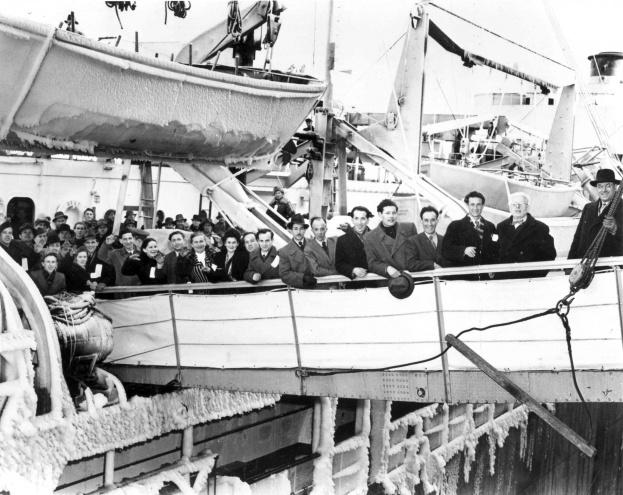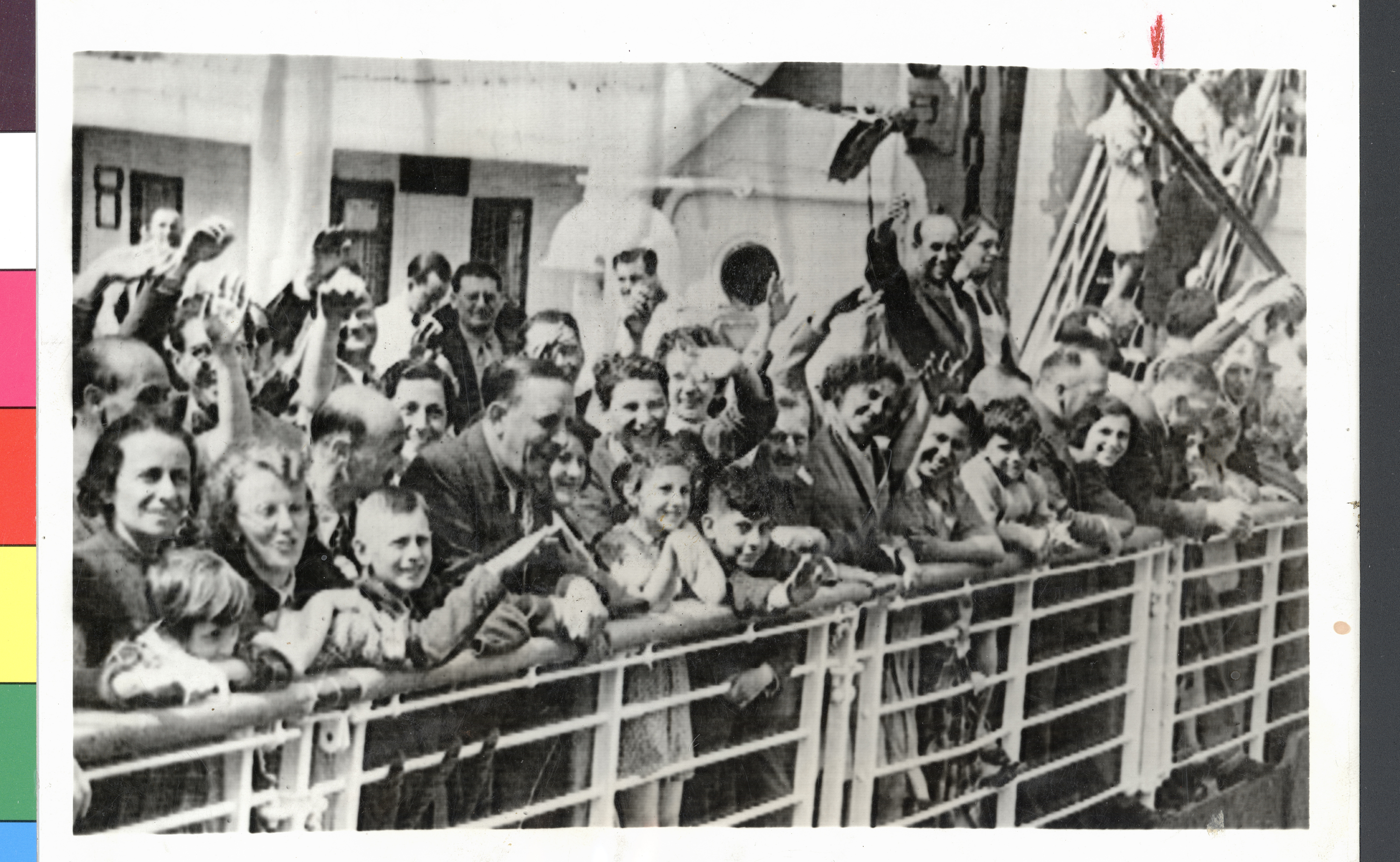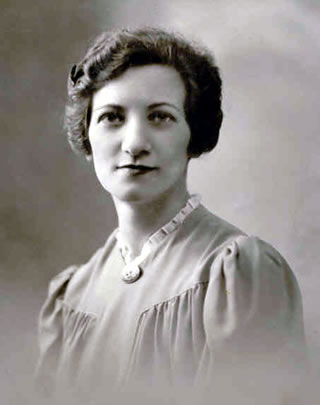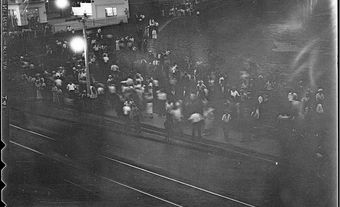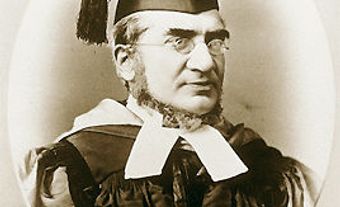Unlike most immigrants to Canada, Jews did not come from a place where they were the majority cultural group. Jews were internationally dispersed at the time of the ancient Roman Empire and after unsuccessful revolts against it lost their sovereignty in their ancient homeland. Subsequently, Jews lived, sometimes for many centuries, as minorities in the Middle East, North Africa and Europe.
Jews have been in what would become Canada as early as the 18th century. Many more immigrated in the 19th and 20th centuries. In the 2021 census, around 335,000 people identified themselves as Jewish in Canada. (See also Judaism.)
Early Settlement
Jews in Western Europe participated in the opening up of the Americas to European colonization, but were legally barred from residence in New France, where immigration was restricted to Catholics. Jews settled in the British colonies to the south and after the incorporation of New France into the British Empire began also to settle in Lower Canada. (See The Conquest of New France.) By 1768, the number of Jews in Montreal had grown to the point where they decided to establish Canada's first synagogue, Shearith Israel. By the late 18th century Jews had also settled in Quebec City and other parts of Lower Canada. The Hart family were prominent in the area of Trois-Rivières; Ezekiel Hart was elected to the legislature of Lower Canada in 1807 but was denied his seat on the basis of his religion. (See Judaism.) Jews participated in the settlement of Upper Canada, establishing the first synagogue in Toronto (later Holy Blossom Temple) in 1856.
The 1871 census, the first after Confederation, counted 1,115 Jews in Canada ― 409 in Montreal, 157 in Toronto, 131 in Hamilton and smaller numbers in Quebec City, Saint John, London, Kingston and Brantford. A community of over a hundred was also settled in British Columbia when it joined Confederation. British Columbia's first delegation to the House of Commons included Henry Nathan, the first Jewish Canadian MP.
Mass Migration
At the end of the 19th century, 80 per cent of the world's 10 million Jews lived in the Russian, Austro-Hungarian and German empires. The possibility of better conditions elsewhere, prejudice, legal discrimination and violence encouraged emigration. Pogroms ― violent mob attacks on Jewish neighbourhoods involving rape, injury, murder, looting and destruction ― began in the Russian Empire in 1881. Jews fled Eastern Europe to many places, including Canada, in the period from the 1880s to the beginning of the First World War. Jews also moved north from the United States, part of the cross-border migration common in much of Canadian history.
By the time the outbreak of the First World War curbed immigration, there were over 100,000 Jewish Canadians. Montreal and Toronto together accounted for about three-quarters of the Canadian Jewish population, but Jews could be found in every major city and in dozens of smaller places. Jews worked as retailers and wholesalers, many beginning as peddlers and working their way up to established businesses. Jews also provided much of the labour for the urban sweatshops of the new ready-to-wear clothing industry. Jewish merchants spread out to small towns, adding synagogues to the places of worship found in rural Canada. Eleven Jewish farm colonies were founded in Saskatchewan and Manitoba, assisted by the Jewish Colonization Society.
Organization and Identity
During their long period of international dispersion, Jews had developed an identity based on being a national minority with a distinctive religion and communal structure. When Jews settled in Canada, they founded organizations which expressed each of these dimensions of their identity.
In accordance with their religious traditions of thousands of years (see Judaism) places for worship were usually set up soon after the arrival in a new place of only a handful of families. Often the need to establish a Jewish cemetery was the source of the first Jewish organization. Synagogues and schools followed shortly after.
Turn of the century Jewish immigrants came almost entirely from the multinational empires of Eastern Europe. Nationalist movements within these empires were organizing in pursuit of greater autonomy and eventual national independence. Modern nationalism encouraged the revival of Jewish national identity, which took two forms. Each had mass support in Eastern Europe. The first was the movement for the reconstruction of modern Jewish life around guaranteed minority rights within modern nation-states, with separate social institutions controlled by the Jewish minority, and the recognition that the primary language of modern Jewish cultural life would be the everyday language of Eastern European Jews - Yiddish. The second form of modern Jewish nationalism, Zionism, aimed at the re-establishment of an independent national state in the ancient Jewish homeland.
Jewish immigrants to Canada from Eastern Europe were sympathetic to both of these movements. The Montreal Jewish Public Library ― one of the major institutions of that community ― Yiddish theatres, and Yiddish literary creativity had their social base in the attachment to Yiddish culture. The generation of Jews who were being transformed into urban factory workers were particularly strong supporters of secular Yiddish culture. The language of their unions and fraternal organizations was Yiddish; through it, they shared and interpreted their experiences in the new land.
The mounting enthusiasm for Zionism in Eastern Europe was paralleled in Canada. The Federation of Canadian Zionist Societies, founded in 1899 ― two years after the first World Zionist Congress ― became the first nationwide Canadian Jewish organization. Zionism attracted wide support, including many affluent Jews, who followed the example of Clarence de Sola, the leader of the Federation of Canadian Zionist Societies, by joining the movement. The Zionist movement was an important setting where women's talents were encouraged; women's Zionist organizations took on distinct projects and produced their own cadre of leaders. By the first decades of the 20th century the Canadian Zionist movement, like Zionism worldwide, also contained organizations with competing philosophies. Mizrachi blended Zionism with religious Orthodoxy. Poalei Zion (“the Workers of Zion”) had a strong following among the Jewish working class.
Jewish immigrants also brought a tradition of establishing a communal body, called a “kehillah,” to look after their social welfare needs. The first Jewish social welfare body in Canada was the Young Men's Hebrew Benevolent Society, founded in Montreal in 1863 to assist Jewish immigrants (in recognition of financial support, the name was changed to the Baron de Hirsch Institute in 1900). Montreal and Toronto, with large populations, developed a wide range of communal organizations ― hospitals, social work agencies, homes for the aged, libraries and more. There was a gradual movement toward the formation of organizations to coordinate fundraising in local communities. Immigrant Jews also founded landsmenschaften ― literally, organizations of people from the same place. Landsmenschaften would sometimes sponsor synagogues, but they were primarily organizations in which immigrants helped each other and could reply, as a group, to appeals for help from those left behind.
The movement to organize the Canadian Jewish Congress through countrywide elections spoke on behalf of the common interests of this diverse group of Jews, who thought of themselves in religious, cultural and communal terms. The Canadian Jewish Congress was organized in 1919 while the Treaty of Versailles ending the Great War was being drafted. The treatment of national minorities under the new postwar arrangements was of great interest to Canadian Jews; very many had relatives who were to become citizens in the newly independent country of Poland. The Congress was also part of the groundswell of support for Zionism, which had been endorsed by the British government during the First World War and was further endorsed by the new League of Nations. In anticipation of the renewal of Jewish immigration after the end of the war, the Congress established the Jewish Immigrant Aid Society, which continues as a national agency of Canadian Jewry.
The Great Depression and the Second World War
In 1930, the Canadian government responded to the unemployment caused by the beginning of the Depression by imposing severe restrictions on immigration. Although the cabinet could, and did, approve certain kinds of immigrants, permission for Jews to enter was almost never given. Religious intolerance was still a common feature of Canadian society. Anti-Semitism, which compounded religious intolerance with the new “science” of racism, was found among cultural and political leaders (see Prejudice and Discrimination).
In the face of strong opposition within the Cabinet and the upper levels of the civil service to admitting Jews, the Canadian Jewish Congress was reorganized under the leadership of Samuel Bronfman to work for a safe haven in Canada for some of the increasingly desperate Jews of Europe. Despite mass protests and continuous lobbying by political and communal leaders throughout the Depression and war years, pleas on behalf of the trapped Jews of Europe went unheeded. Canada took in proportionately fewer Jews than any Western country. (See Canada and the Holocaust.) At the same time, 17,000 Jewish Canadians responded to the call to arms in the Second World War and served in the armed forces.
The hard economic times of the Depression led to a greater awareness of the need to coordinate the fundraising for communal organizations. The level of coordination increased in Toronto with the organization of the United Jewish Welfare Fund in 1937 and in Montreal with the formation of the Combined Jewish Appeal Campaign in 1941.
The Post-Second World War Period
With a growing economy in need of workers, Canada opened its doors to immigrants soon after the end of the Second World War. About 40,000 survivors of the Holocaust came in the late 1940s, seeking a peaceful country, a place where they might have a chance at rebuilding their lives, or simply coming because they had relatives here. In the 1950s, Jews fleeing hostility in newly independent countries in North Africa immigrated to Canada, settling mostly in Montreal, where their French language was an asset.
During the postwar period, Jews became more fully integrated into Canadian life. Human rights legislation, which began to be introduced in Canada in the late 1940s, removed discriminatory practices which had been previously common. The introduction in 1971 of the federal policy of multiculturalism (later supplemented with provincial policies and the incorporation of multiculturalism into the Canadian Constitution) highlighted the legitimacy of cultural pluralism within the Canadian mosaic.
Social patterns were also changing as 2nd- and 3rd-generation Jews born in Canada became a larger part of the community. Children of immigrant businessmen and labourers persevered through university, joining the professional ranks of doctors, dentists, accountants, lawyers and professors. The growth of Canadian cities in the postwar period was accompanied by the movement of Jews to new suburbs. Rather than dispersing, the 2nd and 3rd generations of Canadian Jews moved as a group. Synagogues, schools, community centres and other institutions relocated to these new neighbourhoods.
There was continuing internal Jewish migration in the postwar period. The Jewish populations of Toronto, Calgary, Edmonton and Vancouver increased during periods of economic growth. In contrast, the Jewish population of small towns and rural areas almost disappeared, with the exception of those small towns within commuting distance of large cities.
Data from the 1991 census indicated that about 30,000 Jews immigrated to Canada from 1981 to 1991. Jewish immigrants from 1981 to 1991 came mainly from the former USSR, Israel, South Africa and the United States.
The Contemporary Community
Canada is now home to the fourth-largest Jewish community in the world. According to the 2021 census, around 335,000 people identified themselves as being Jewish. (See Judaism.) The largest Jewish populations in the country can be found in the provinces of Ontario and Quebec.
Current theories of ethnic identity describe ethnic groups as diasporas as well as assimilating minorities. Diasporas are culturally distinct groups scattered in distant countries who stay in touch with their homelands and with each other. This perspective is helpful in understanding Canadian ethnic diversity in general and Canadian Jews in particular. Jews were historical pioneers in the development of a long-continuing diasporic way of life. When modern societies developed in the direction of making ethnic or religious differences issues of private preference, many Jews chose to make their lives with friends and spouses outside of their community of origin. With the decreasing significance of national boundaries, cultural differences and international connections have again become more important. Also, some Jews, like other people at the end of the 20th century, have turned to what their tradition says about values in reaction to the cultural relativism of modern society. Like the members of other Canadian diasporas, Jews are faced with the challenge of developing strategies to live in a Canada which is moving toward ever more intimate involvement with a culturally plural, uncertain and interconnected world.
The generation of survivors of the Holocaust is now elderly, but the challenge of living with the history of being the victims of a campaign of mass extermination has not disappeared. The effort to bring to justice war criminals who had sought refuge in Canada became a major issue in the 1980s and continues. Remembrance of the Holocaust and the struggle with its implications are not only personal issues for children and grandchildren of Holocaust survivors but also communal issues in Canadian Jewish life. Museums, lectures and other activities are resources for the younger generation of Jews and for other Canadians who are troubled about the threat of another genocide.
The creation of the State of Israel in 1948 marked the success of the Zionist movement and initiated a period of gradually closer ties between Israelis and Canadian Jews. Jewish federations have cultivated close relations with Israel, as have the organizations of each of the branches of Judaism. The Canada-Israel Committee was created to establish an organization that would speak about Israel on behalf of the Jews in Canada. Specialized organizations connect Canadian Jews with particular parts of Israeli society ― universities, hospitals and social welfare projects. Visits to Israel have become much more frequent, often in the form of tours sponsored by organizations. Most adult Canadian Jews have visited Israel; many have visited more than once. The number of Canadian Jews who can speak Hebrew is increasing.
Jewish federations have moved beyond meeting social welfare needs, developing cooperative relations with other community groups, and defending Jews against discrimination and anti-semitism into activities directly related to Jewish identity and continuity. In Montreal, a new inclusive body, the Allied Jewish Community Services, was established in 1965. The Toronto branch of the Canadian Jewish Congress merged into the United Jewish Welfare Fund in 1976; the new organization is now named the Jewish Federation of Greater Toronto. In the recent period of governmental cutbacks in social services, individuals and organizations have looked more for assistance to the social welfare services supported by Jewish federations. The 12 Jewish communities affiliated with the Canadian office of the Council of Jewish Federations share responsibility for the Canadian Jewish Congress, student services at Canadian universities, a Jewish continuity commission, the Canada-Israel Committee, the Jewish Immigrant Aid Services, a detailed analysis of census data on Jews and other activities. The Canadian office is recognized as a regional organization within the North American umbrella organization, the Council of Jewish Federations.
Many Jews have made significant contributions to Canadian culture. In literature, Jewish Canadians like Leonard Cohen, A.M. Klein, Henry Kreisel, Irving Layton, Eli Mandel, Mordecai Richler, Adele Wiseman, Miriam Waddington, Joseph Rosenblatt, Naim Kattan, Stuart Rosenberg and W. Gunther Plaut have all left their mark. (See Jewish Writing.) In music, notable Jews include: Louis Applebaum, Milton Barnes, Alexander Brott, Harry Freedman, Srul Glick, Oskar Morawetz and John Weinzweig, Meanwhile, in the performance arts, we find: Lloyd Bochner, Pauline Donalda, Lorne Greene, John Hirsch as well as Wayne and Shuster. In journalism, Barbara Frum and Peter C. Newman are notable figures. Jews have also reached important positions in public affairs (see: David Barrett; David Croll; Herb Gray; Bora Laskin; David Lewis; Stephen Lewis) and in economic life (see: Bronfman Family; Reichmann Family; Sam Steinberg). The present generation of Canadian Jews includes leading writers, filmmakers, musicians, journalists, businessmen, politicians, civil servants and scholars.

 Share on Facebook
Share on Facebook Share on X
Share on X Share by Email
Share by Email Share on Google Classroom
Share on Google Classroom




